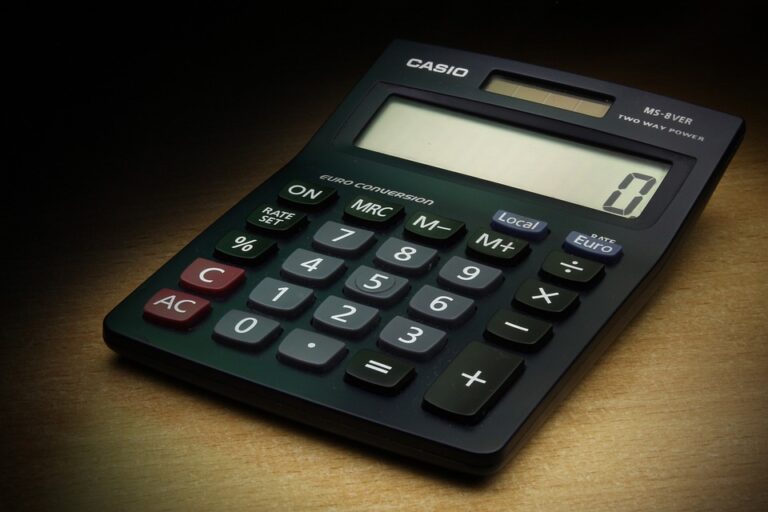Last updated Mar. 29, 2025 by Charles Zemub
How to Balance a Checkbook: A Comprehensive Guide
In today’s digital era, where online banking and mobile payment apps have become the norm, many may perceive balancing a checkbook as an outdated practice. However, this traditional method of managing finances remains vital for keeping a realistic view of your financial standing, helping prevent overdrafts, and fostering financial discipline. This article explores the step-by-step process of balancing a checkbook, the benefits, and why it remains relevant in ensuring sound financial health.
Understanding the Basics
Before diving into the process of balancing a checkbook, it’s essential to understand what it involves. A checkbook register is a logbook provided with a checkbook where you can record all transactions, including deposits, checks written, ATM withdrawals, and debit card purchases. Balancing a checkbook means reconciling your register with the bank statement to ensure that both reflect the same account balance after accounting for all transactions.
Benefits of Balancing a Checkbook
-
Prevention of Overdrafts: By regularly balancing your checkbook, you always know how much money is available, greatly reducing the risk of overdrafts.
-
Error Detection: Mistakes can happen in banking transactions. Regularly checking your register against bank statements can help detect errors and unauthorized charges.
-
Better Financial Planning: Understanding your spending habits and income flow allows for better budget management and financial planning.
-
Fraud Prevention: Regularly monitoring your transactions can help spot suspicious activity early, reducing the risk of fraud.
- Financial Discipline: This practice encourages financial discipline and awareness, two crucial aspects of personal finance management.
Steps to Balance a Checkbook
1. Record All Transactions
The first step in ensuring accuracy in your financial records is promptly recording every transaction you make:
- Checks Written: Note the check number, date, amount, and payee immediately after writing a check.
- Deposits Made: Record all deposits promptly, including direct deposits.
- ATM Withdrawals: Keep ATM receipts and log them along with withdrawal amounts and associated fees.
- Debit Card Purchases: Save receipts and note transaction details in the register as soon as possible.
Keeping all receipts and confirmation emails can help cross-verify transactions during balancing.
2. Gather Your Materials
To balance your checkbook, you need:
- Your checkbook register
- The latest bank statement (can be accessed online)
- A calculator
- All recent receipts and transaction notes
3. Match Every Entry
Start by comparing your checkbook’s recorded transactions with the bank statement:
- Check Transactions: Ensure each transaction appears on both your register and statement.
- Cross-verify amounts: Validate that recorded amounts match those on the bank statement.
- Pending Transactions: Identify checks and other transactions that haven’t cleared your account yet.
Mark all transactions that align correctly between your register and the statement.
4. Update Your Checkbook
Bank statements may include transactions you haven’t yet noted. Add these to your register:
- Automatic Payments: Notate any automatic payments or fees deducted.
- Interest and Fees: Enter any interest earned or bank fees incurred.
5. Calculate Your Balance
With all transactions recorded and verified, calculate the balance:
- Start with Your Opening Balance: This is the last reconciled balance or starting balance of the statement period.
- Add Deposits: Add all deposits not accounted for in your opening balance.
- Subtract Withdrawals: Deduct all checks, ATM withdrawals, debit card expenses, and fees.
Your calculated balance should match your bank statement’s ending balance, minus any outstanding transactions not yet reflected by the bank.
6. Find Discrepancies
If discrepancies arise, verify:
- Bank Errors: Contact your bank for incorrect entries.
- Unaccounted Transactions: Re-assess all incoming and outgoing funds.
- Mathematical Errors: Check calculations, ensuring there are no addition or subtraction mistakes.
Discrepancies need resolution to ensure accurate financial tracking.
✓ Short Answer
Balancing a checkbook involves verifying your checkbook register against your bank statement to ensure both reflect the same balance. This practice helps prevent overdrafts, detect errors, and detect fraud, enabling better financial management. Steps include recording all transactions consistently, matching each entry with bank statements, updating your checkbook with unrecorded transactions, and reconciling any discrepancies to achieve accuracy in your financial records. Although perceived as old-fashioned, it remains a vital step in maintaining financial discipline and awareness in personal finance management.
Tips for Efficient Checkbook Balancing
- Consistency is Key: Regularly update your register and balance your checkbook monthly or bimonthly.
- Use Technology: Utilize financial management apps that digitalize the process, offering automated tracking and reminders.
- Double-Check Entries: Regularly review your transactions to ensure no data entry errors.
Why Balancing a Checkbook Still Matters
Online financial services have made transaction tracking easier, but they also increase exposure to errors and fraud. Balancing a checkbook instills an appreciation of money flow, reinforces budgeting, and provides a failproof backup against technological failures and mistakes.
FAQs
Q1: Do I still need to balance a checkbook if I use digital banking?
A1: Yes, balancing a checkbook enhances financial awareness. While digital banking helps track finances, human error, technology glitches, or fraudulent activities can still occur. It’s a reliable habit that ensures all transactions are accounted for and discrepancies are detected.
Q2: How often should I balance my checkbook?
A2: Ideally, balance your checkbook monthly. If you have a large number of transactions, consider bi-monthly balancing to maintain accuracy and financial health.
Q3: What should I do if the bank statement doesn’t match my records?
A3: Recheck all calculations, verify pending transactions, and ensure no transactions have been omitted. If discrepancies persist, contact your bank to investigate potential errors on their end.
Q4: Can I use apps to help balance my checkbook?
A4: Yes, financial management apps offer features to help track expenses, record transactions, and reconcile statements, making balancing more efficient and less time-consuming.
Q5: Is balancing a checkbook relevant for people without checkbooks?
A5: Even without checkbooks, balancing your spending against your bank statements is a crucial financial habit. It applies equally to credit and debit card transactions, mobile payments, and bank transfers.




